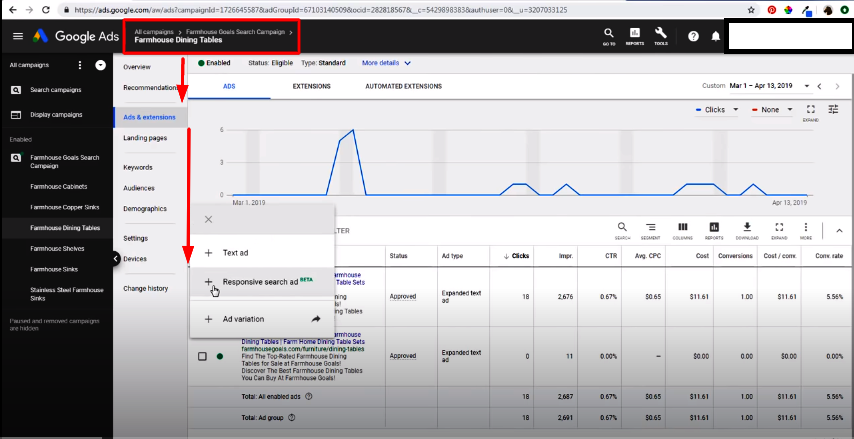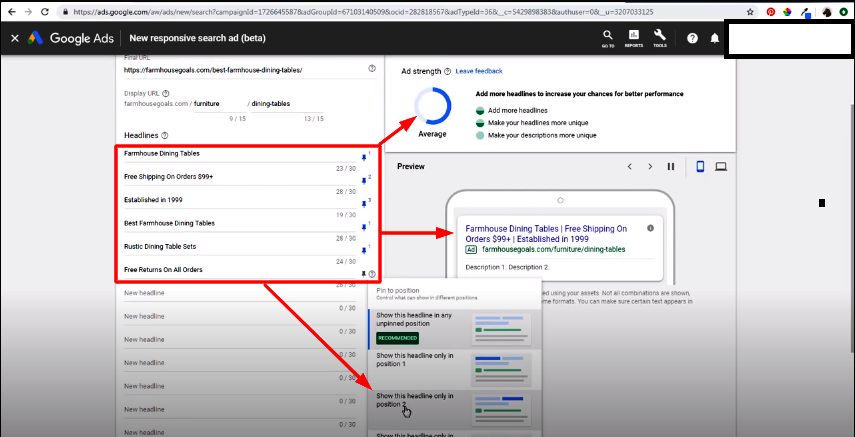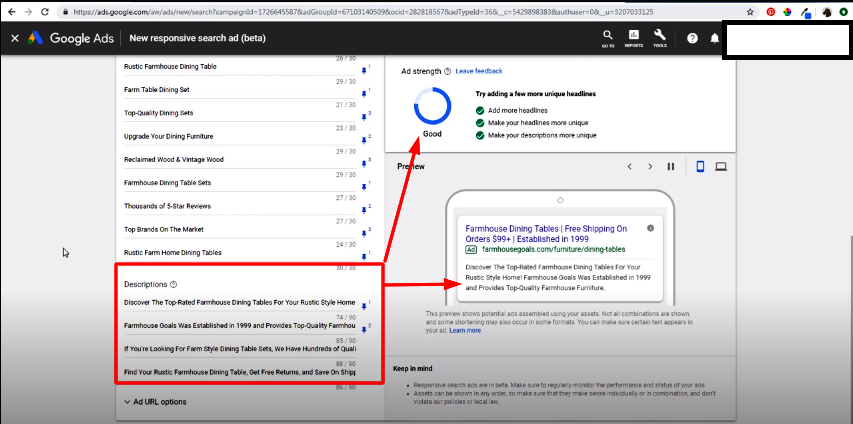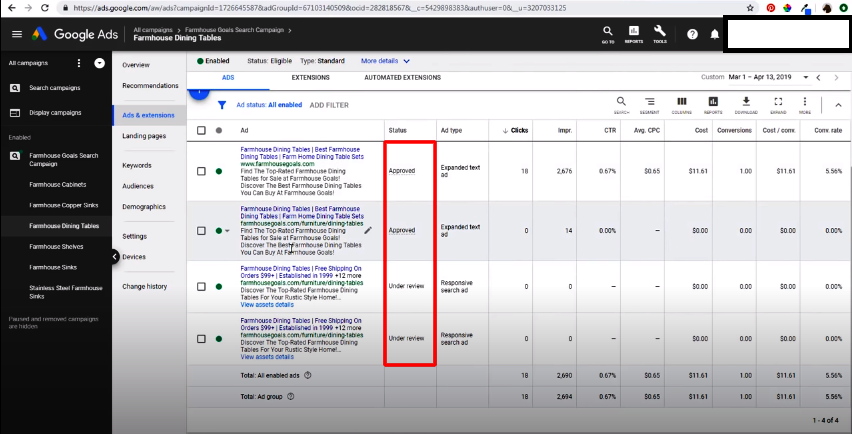- A. Google Ads creates them based on existing ad copy, landing pages, and extensions
- B. Google Ads creates them based on existing high performing ad copy
- C. Google Ads mixes and matches headlines and description lines that have been provided
- D. Google Ads mixes and matches headlines and URLs that have been provided
Correct Answer: C. Google Ads mixes and matches headlines and description lines that have been provided
The trend of responsive ads is nothing new and has been growing over the past few years.
The key benefit of responsive ads is that they work for all devices. Converts more traffic from different devices at the same time.

Several major search engines — Google, Bing, Yahoo — and mobile app search engines — Appbrain, Cense, and Fonepulse — are integrating responsive ads.
Responsive ads also allow search engines to measure ad performance better and better understand their potential audience. They also conduct testing with real users on responsive ads to see if it’s feasible to be used as part of the entire journey from search to buying a product or a service.
The idea for responsive ads is to present the user with one ad at a time and that each ad is also a “punchline” to the other ads which appear after the first.
How is Google Adsense Generating Responsive Search Ads?
When you use Google Adsense on your site, your ads are placed into a desktop ad that runs in the top right of the page. This ad shows a static image that does not change so that your visitors are only ever seeing one ad at a time.
Google has developed a system to use the page where your page loads to show a mobile ad.
The mobile ad is then placed in the exact same spot on the page.
This can be set to:
- Display only on desktop
- Display on both desktop and mobile
- Display only on mobile only
- Display on mobile and desktop simultaneously
It is recommended to run responsive ads on one page and not a whole mobile ad campaign on multiple pages.
The functionality is still in testing, but Google says it should become available in the next month or two.
A recent study shows that 48.3% of marketers believe the new tracking system (Mozilla, Chrome, Safari, etc. announced that they are saying goodbye to tracking cookies) will affect the paid ads market. You can see a detailed study from here.
How to Generate Responsive Search Ads
If you’d like to learn how to generate responsive search ads, you can download the Google Adsense for Search Guides guide.
After downloading, select the ‘Mobile Advertising’ tab and search for ‘responsive search ads.
You can find the ‘Responsive Search Ads Platform‘ and ‘Mobile ads’ settings on the mobile page.
You’ll find that your business should be limited to displaying ads in their responsive format, as only desktop ads can be interactive.
Check this screen to see the different formats that are supported for desktop and mobile.
Step 1:

Step 2

Step 3:

Final Step: Waiting Approval and Monitor Performance

Customizing Your Responsive Search Ads
To customize your ads, choose the ‘Display format‘ and ‘Mobile display format’ settings.
In the ‘Adjust text‘ section, you can make changes to the text that appears on the ad, including several different options:
Headline type
- Text
- Link
- Social share
This option may be necessary to use if you wish to display your responsive search ads on social media sites.
You can also select the filter options to show only responsive search ads, ad formats, and ad types.
Finally, you’ll need to choose the image you want to use, as that is what will appear after your responsive ad appears.
Note: It is important to create the ad using the correct image that conforms to the Google Image Policy.
To add additional images to your ad, navigate to the ‘Add to Google’ page, select the photo you want, and then click ‘Update image.’
Conclusion
Effective search ads can generate more traffic, conversions, and sales. Choose the right provider, and the winning probability is much higher. Responsive search ads are a great way to increase your visibility to the right audience, only when best utilized.
More questions:



